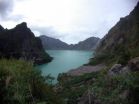(Press-News.org) A new risk assessment model may help predict development of advanced age-related macular degeneration, according to a report published Online First by Archives of Ophthalmology, one of the JAMA/Archives journals.
Age-related macular degeneration (AMD) is a leading cause of blindness in the United States and the Western world, according to background information in the article. "As progress in designing better preventive measures and earlier treatment options accelerates and new gene associations are identified that add to currently known risk factors, the desirability of having a reliable risk assessment model has become of considerable interest and potential value," write the authors. The model, they explain, should identify individuals with early AMD who are at greatest risk to progress to advanced AMD and should be able to predict when that progression might occur.
Michael L. Klein, M.D., from the Casey Eye Institute, Oregon Health & Science University, Portland, and colleagues sought to design a risk assessment model for development of advanced AMD that included phenotypic (related to observable physical characteristics), demographic, environmental and genetic risk factors. They used longitudinal data from the Age-Related Eye Disease Study, including participants' DNA samples, ocular and medical histories and examinations. The researchers identified two endpoints: development of advanced AMD in either eye by participants who did not have this condition at baseline, and advanced AMD in a second eye by participants who, at baseline, had it in one eye. Patients were followed for an average of 9.3 years.
The variables included in the final model included simple scale score (a sum of clinical risk factors in both eyes), two genotypes, very large drusen (deposits on the retina associated with AMD), smoking, family history, advanced AMD in one eye and age. The complete model appeared to perform well and to discriminate an individual's risk of advanced AMD. Of the 2,602 participants in the final model who, at baseline, had no advanced AMD, 24 percent (n = 635) developed advanced AMD during follow-up. Of those with advanced AMD at baseline, 82 percent who had the geographic atrophy (gradual deterioration of retinal cells, called "dry AMD") type and 56 percent who had the neovascular type (new blood vessel formation and leakage, called "wet AMD") developed advanced AMD in the other eye.
The results "can be of potential value in clinical practice by helping determine the frequency of follow-up examinations, the use of home monitoring of central vision, and the advisability of initiating preventive measures including beneficial lifestyle changes such as dietary alterations and nutritional supplement use," the authors note. "The short-term end points (e.g., 2 years) may be helpful in planning clinical trials." They add that the model performed well on measures of discrimination, calibration and overall performance. "We believe our current model is of substantial value in assessing AMD risk, and we expect that future advances will further improve its accuracy," they write.
###(Arch Ophthalmol. Published August 8, 2011. doi:10.1001/archophthalmol.2011.216. Available pre-embargo to the media at www.jamamedia.org.)
Editor's Note: This work was supported by the Casey Eye Institute Macular Degeneration Fund; Research to Prevent Blindness, New York; the Bea Arveson Macular Degeneration Fund; and the Foundation Fighting Blindness, Owings Mills, Md. Please see the article for additional information, including other authors, author contributions and affiliations, financial disclosures, funding and support, etc.
To contact Michael L. Klein, M.D., call Jim Newman at 503-494-8231 or e-mail newmanj@ohsu.edu.
Researchers develop risk assessment model for advanced age-related macular degeneration
2011-08-09
ELSE PRESS RELEASES FROM THIS DATE:
More frequent visual field testing may lead to earlier detection of glaucoma progression
2011-08-09
In patients with glaucoma, frequent visual field testing may be associated with earlier detection of the condition's progression, according to a report published Online First by Archives of Ophthalmology, one of the JAMA/Archives journals.
According to background information in the article, visual field testing is one of the main ways of monitoring patients with glaucoma for progression. "Estimating rates of progression can help identify patients who are progressing at a faster pace and are therefore at serious risk of developing visual disability during their lifetime," ...
Soy tablets not associated with reduction in bone loss or menopausal symptoms in women
2011-08-09
Soy isoflavone tablets do not appear to be associated with a reduction in bone loss or menopausal symptoms in women within the first five years of menopause, according to a report in the August 8 issue of Archives of Internal Medicine, one of the JAMA/Archives journals.
The beginning stages of menopause are often accompanied by rapid bone loss, hot flashes, vaginal dryness and sleep disturbances among other symptoms, according to background information in the article. "Estrogen therapy with or without progesterone prevents most of these changes. However, as a result of ...
Massachusetts health-care reform associated with increased demand for medical safety-net facilities
2011-08-09
Patient demand for care from safety-net providers (such as community health centers and public hospitals) in Massachusetts has increased, even though the number of patients with health insurance also increased following the state's passage of health care reform, according to a report in the August 8 issue of Archives of Internal Medicine, one of the JAMA/Archives journals. The article is part of the journal's Health Care Reform series.
According to background information in the article, a disproportionate share of patients who do not have health insurance obtain care ...
Newly discovered antibody recognizes many strains of flu virus
2011-08-09
Some vaccines are once-in-a-lifetime; others need a booster shot or two to maintain their potency. And then there's the flu vaccine, which only lasts a year. Strains of influenza virus change so much from year-to-year that new vaccines must be developed annually to target the strains of virus that are most likely to cause illness. But Howard Hughes Medical Institute (HHMI) scientists have now discovered a human antibody that recognizes many different flu strains. Understanding more about this antibody may help scientists design a longer-lasting vaccine against the influenza ...
Meteorites: Tool kits for creating life on Earth
2011-08-09
Washington, D.C.—Meteorites hold a record of the chemicals that existed in the early Solar System and that may have been a crucial source of the organic compounds that gave rise to life on Earth. Since the 1960s, scientists have been trying to find proof that nucleobases, the building blocks of our genetic material, came to Earth on meteorites. New research, published next week in the Proceedings of the National Academy of Sciences, indicates that certain nucleobases do reach the Earth from extraterrestrial sources, by way of certain meteorites, and in greater diversity ...
Biology, materials science get a boost from robust imaging tool
2011-08-09
EUGENE, Ore. -- (Aug. 8, 2011) -- Shape and alignment are everything. How nanometer-sized pieces fit together into a whole structure determines how well a living cell or an artificially fabricated device performs. A new method to help understand and predict such structure has arrived with the successful use a new imaging tool.
Coupling laser-driven, two-dimensional fluorescence imaging and high-performance computer modeling, a six-member team -- led by University of Oregon chemist Andrew H. Marcus and Harvard University chemist Alan Aspuru-Guzik -- solved the conformation ...
Guam researcher studies Mount Pinatubo ecosystem recovery
2011-08-09
University of Guam ecologist Thomas Marler recently mobilized efforts to characterize the vegetation that has recovered following the eruption of Mount Pinatubo, Philippines. "My interest was sparked by the paradox that this volcano's cataclysmic 1991 eruption was so powerful it changed global climate, yet after a full 15 years the biology of the recovering ecosystem had not been studied," said Marler.
The void of research motivated the Guam ecologist to spend a majority of 2006 conducting botanical surveys on the mountain. Marler then teamed up with University of Washington ...
Heavy metal -- in and around the lakes
2011-08-09
Heavy metal pollution of lakes has a seriously detrimental impact on people and ecosystems that rely on such bodies of water. According to a study published in the current issue of Interdisciplinary Environmental Review, researchers have focused on the physicochemical properties and toxicology of water from and around Thane City of Maharashtra.
Environmental chemist Pravin Singare of Bhavan's College, in Mumbai, and colleagues highlight the fact that fresh water bodies all over the world are becoming increasingly polluted day by day and that this represents a growing ...
Improved radical surgery techniques provide positive outcomes for bladder cancer patients
2011-08-09
Bladder cancer patients who have radical surgery at university hospitals can benefit from excellent local control of the disease, acceptable clinical outcomes and low death rates, according to research in the August issue of the urology journal BJUI.
Researchers studied 2,287 patients who had radical cystectomy surgery, where the bladder is removed, together with nearby tissue and organs as required. The surgery was performed at eight Canadian academic centres between 1998 and 2008.
The study found that there were three independent factors, apart from pathological ...
Live from the scene: Biochemistry in action
2011-08-09
Researchers can now watch molecules move in living cells, literally millisecond by millisecond, thanks to a new microscope developed by scientists at the European Molecular Biology Laboratory (EMBL) in Heidelberg, Germany. Published online today in Nature Biotechnology, the new technique provides insights into processes that were so far invisible.
By combining light-sheet microscopy and single molecule spectroscopy, the new microscope can record the fluorescence of every pixel within view, and take snapshots at intervals of less than one millisecond. With it, scientists ...


